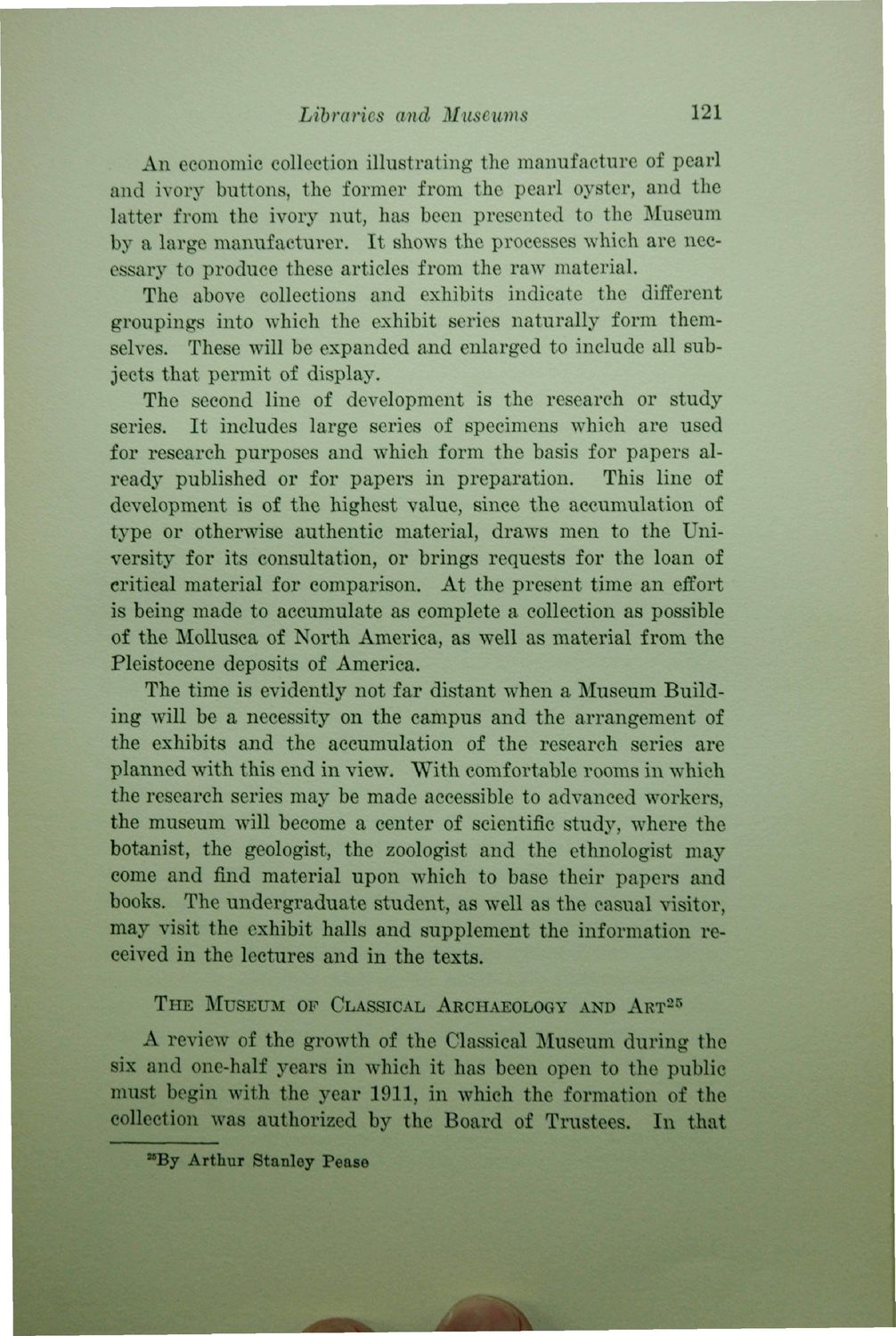| |
| |
Caption: Book - 16 Years (Edmund James)
This is a reduced-resolution page image for fast online browsing.

EXTRACTED TEXT FROM PAGE:
Libraries and Museums 121 An economic collection illustrating the manufacture of pearl and ivory buttons, the former from the pearl oyster, and the latter from the ivory nut, has been presented to the Museum by a large manufacturer. It shows the processes which are necessary to produce these articles from the raw material. The above collections and exhibits indicate the different groupings into which the exhibit series naturally form themselves. These will be expanded and enlarged to include all subjects that permit of display. The second line of development is the research or study series. It includes large series of specimens which are used for research purposes and which form the basis for papers already published or for papers in preparation. This line of development is of the highest value, since the accumulation of type or otherwise authentic material, draws men to the University for its consultation, or brings requests for the loan of critical material for comparison. At the present time an effort is being made to accumulate as complete a collection as possible of the Mollusca of North America, as well as material from the Pleistocene deposits of America. The time is evidently not far distant when a Museum Building will be a necessity on the cainpus and the arrangement of the exhibits and the accumulation of the research series are planned with this end in view. With comfortable rooms in which the research series may be made accessible to advanced workers, the museum will become a center of scientific study, where the botanist, the geologist, the zoologist and the ethnologist may come and find material upon which to base their papers and books. The undergraduate student, as well as the casual visitor, may visit the exhibit halls and supplement the information received in the lectures and in the texts. THE MUSEUM OF CLASSICAL ARCHAEOLOGY AND ART 2 5 A review of the growth of the Classical Museum during the six and one-half years in which it has been open to the public must begin with the year 1911, in which the formation of the collection was authorized by the Board of Trustees. In that By Arthur Stanley Pease
| |